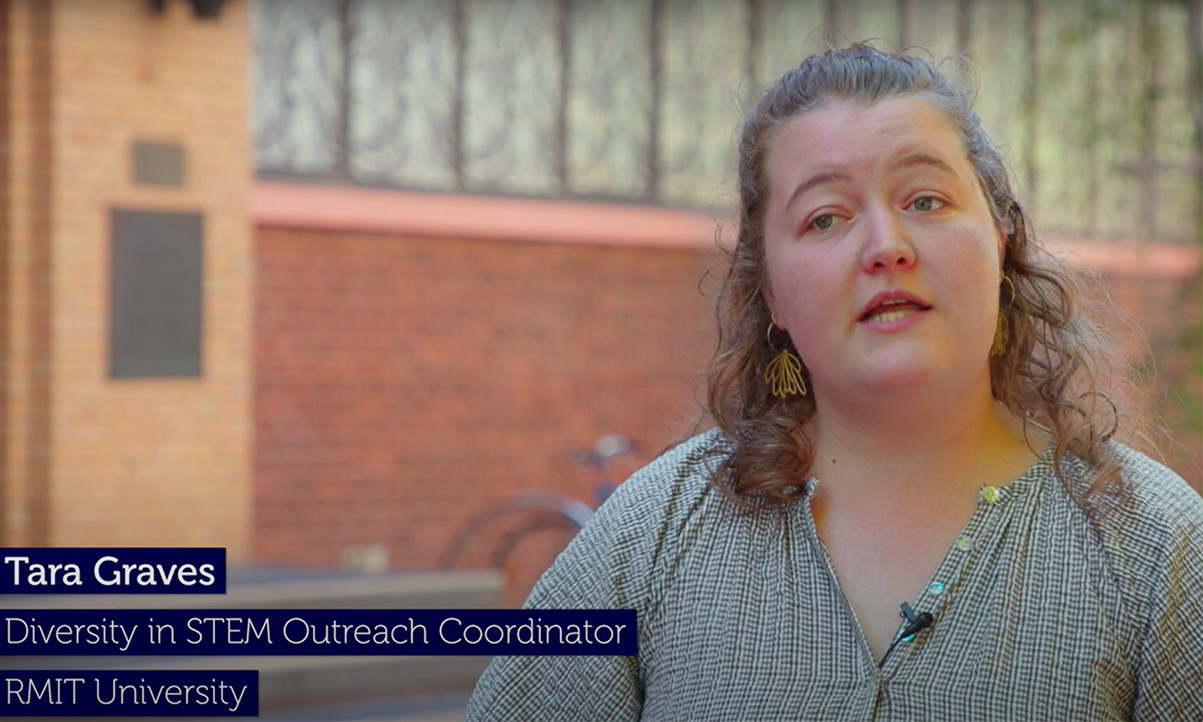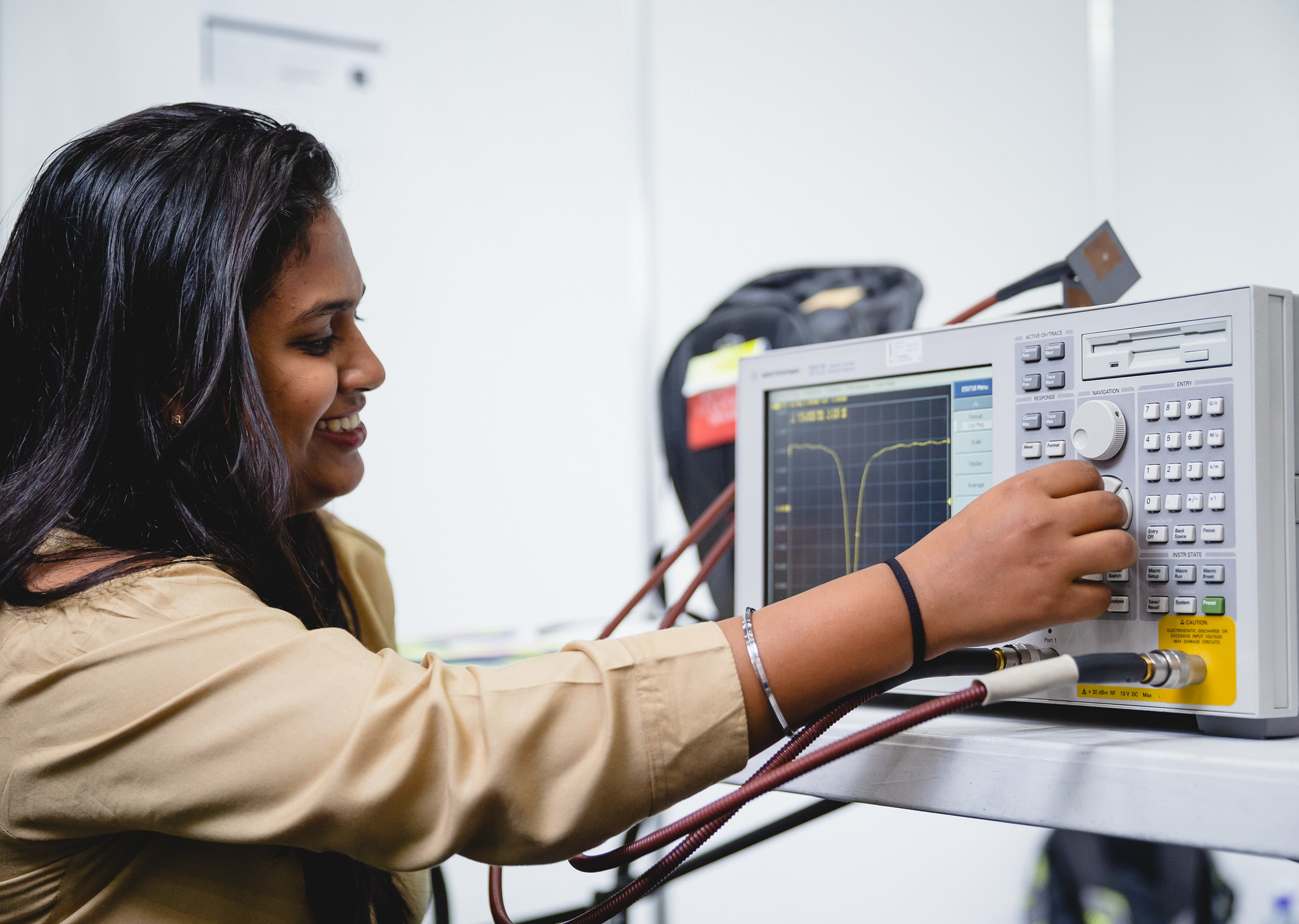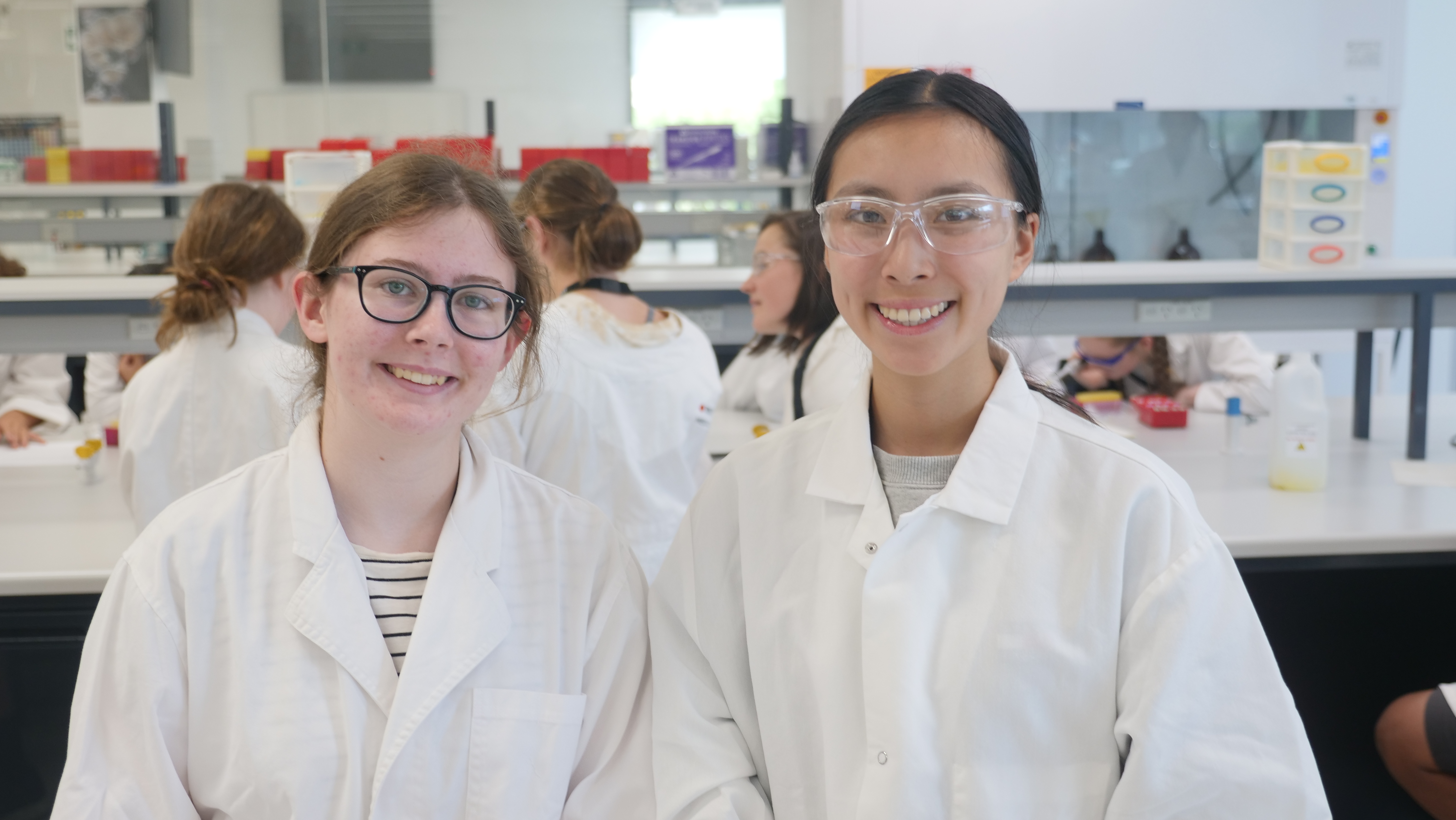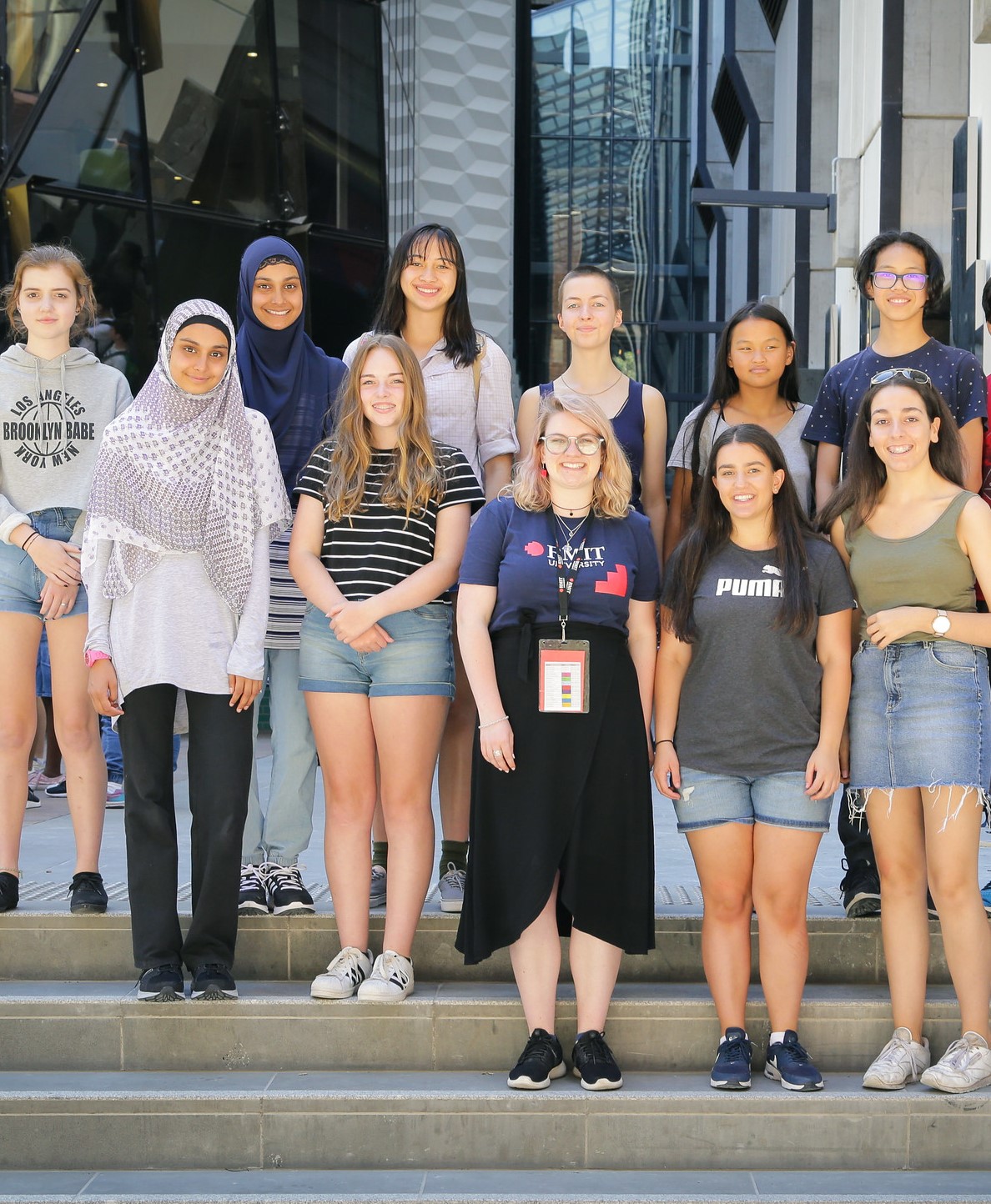

Learn more about our programs below and express your interest in our outreach programs. Contact us at stemm.women@rmit.edu.au if you have any questions.
The Future STEM Leaders program is a multiple touchpoint program. It targets and supports the growth and development of leadership skills in year 9 and 10 women to be STEM Leaders in a classroom through facilitating the delivery of a practical STEM workshop to younger year students. The younger year student participation is open to years 6 to 8 of all genders. The STEM Leaders learning is guided by industry experts and Women in STEM Ambassadors who are current RMIT students studying a variety of disciplines across STEM. Part 1 of this program can be conducted at RMIT or your school.

Hear from our Women in STEM Ambassadors, ask questions, learn about career paths and/or complete a practical activity. Industry representation optional. This can take place in the form of an incursion at your school, excursion to an RMIT campus or online.
This single day offering provides on campus or incursions exploring STEM through practical activities.
Incursion at your school including practical STEM activities and exploration of pathway options for study through Vocational Education.
A day of STEM- or VE-themed workshops at our RMIT campuses for students to explore pathways into tertiary education. These events are only open to Indigenous high school students in Victoria in years 9 and above.
These virtual session/s with your school provide students the chance to complete workshop activities facilitated online. Please note online offerings are limited to certain areas of STEM.
On-campus activities to be included as part of your city experience.
The STEM Regional Roadshow involves running STEM-related workshops with volunteer STEM students from RMIT on-site at regional high and primary schools.

School Network Access Program (SNAP) schools are invited to participate in I Belong in STEMM days held at RMIT campuses for year 9 and 10 students.
Email snap@rmit.edu.au

VIEWS is an exciting program for Year 10, 11 and 12 Indigenous students that will expand student's perspectives on engineering. Over six days students will get an insight into what it’s like to study and work in engineering — and it may not be what you think. RMIT is a leading university partner of VIEWS. Students explore engineering at RMIT on the first day of the week.
Visit the Victorian Indigenous Engineering Winter School website
A holiday program offered to any Victorian High School Student in years 9 and 10.

A student placement program that involves matching current RMIT STEM students (undergraduate or postgraduate) into low socio-economic STEM related high school classrooms for a period of 8 - 10 weeks. Volunteer students take on the role of a mentor, assisting students individually and in facilitated groups with content, career related conversations and overall skill and confidence building.
Visit the In2Science website or email in2science@rmit.edu.au.
For year 10s, we know that choosing your VCE subjects can be tricky but hearing from people who've been there can help. With careers expos cancelled, we've brought current student and industry role models to you in video!

Current university students and industry professionals talk about which Maths subjects they chose to study in Years 11 + 12 and why. They discuss their work and how they use the knowledge they gained from those subjects in what they are doing now. Women studying and working in STEMM.

Current university students and industry professionals talk about which science subjects they chose to study in Years 11 and 12 and why. They discuss their work and how they use the knowledge they gained from those subjects in what they are doing now. Women studying and working in STEM.
Contact us at stemm.women@rmit.edu.au to hear more about high school workshops, events and opportunities.


RMIT University acknowledges the people of the Woi wurrung and Boon wurrung language groups of the eastern Kulin Nation on whose unceded lands we conduct the business of the University. RMIT University respectfully acknowledges their Ancestors and Elders, past and present. RMIT also acknowledges the Traditional Custodians and their Ancestors of the lands and waters across Australia where we conduct our business - Artwork 'Sentient' by Hollie Johnson, Gunaikurnai and Monero Ngarigo.
Learn more about our commitment to Indigenous cultures